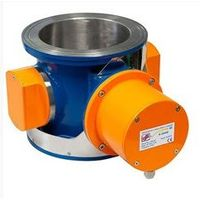PCE Instruments - In-Process Moisture Meter PCE-A 344W
The sludge consistency meter (detection of dissolved substances, suspended solids in waste water) is based on the mi...
The sludge consistency meter (detection of dissolved substances, suspended solids in waste water) is based on the microwave measuring method. The sensor is majorly deployed in municipal sewage treatment plants as well as for consistency measurements in industrial plants. The sensor can measure the exact amount of solids (in total or as active sludge) in any wastewater.
Through the installation of microwave sensors plants experience up to 20% of savings in the use of flocculants. This translates into substantial cost savings for the plant operators. The payback period for the initial investment is thus reduced to a few months (depending on the size of the wastewater treatment plant.)
The microwave consistency meter was originally developed for the determination of pulp and wastewater fiber consistency in the paper industry. The microwave operating principle of the sensor allows for the determination of consistencies without calibration. in contrast to optical methods, this meter does not deliver erroneous results. The system requires very little maintenance.
The microwave sensor is inserted into a pipe and the current sludge consistency of the wastewater can be read on the display. Additionally, the sensor can be integrated into an automated control system like DCS. PCE offers remote control and maintenance for all sensors. The sludge consistency meter offers precise measurements with the sensor operating independently of flow rate or sludge structure. There is no need for further maintenance after installation.
Active Questions & AnswersAsk a Question
There are no current Discussions
Moisture Analyzers Service ProvidersView All (3)
Documents & Manuals
There are no Documents or Manuals available.
Features of In-Process Moisture Meter PCE-A 344W
- Fulfillment of technical requirements and environmental standards
- Optimization of the automation process
- Reduction in the use of polymers
- Reduced energy consumption
- Reduction in the number of laboratory tests
- Optimization of flocculant use (optimal dosage can be reliably determined)
General Specifications
There are no General Specifications available.

